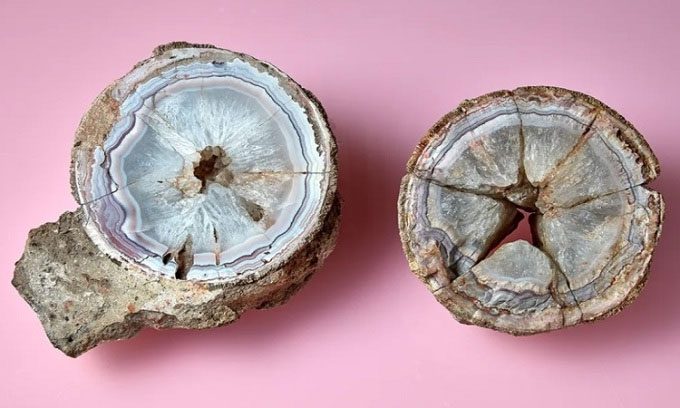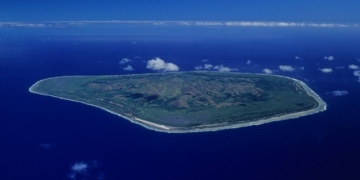Researchers at the Natural History Museum have discovered a 15cm agate stone that is actually a fossilized titanosaur egg.
In 1883, a piece of agate was added to the mineral collection of the Natural History Museum in London, England. Measuring approximately 15 cm in diameter, this nearly spherical specimen remained in the collection for 175 years until a chance discovery revealed it to be a dinosaur egg, IFL Science reported on March 31.

The agate stone inside a 60-million-year-old dinosaur egg. (Photo: Natural History Museum).
The specimen has a beautiful light pink exterior and a white interior, which caught the attention of Robin Hansen, one of the mineral curators at the museum. Hansen was involved in preparing the specimen for display in 2018. Subsequently, a mineral showcase in France contributed to revealing the significance of the stone. A vendor showed Hansen a fossilized dinosaur egg that was round with a thin shell and agate in the center. She immediately contacted the museum regarding the specimen on display.
Dinosaur experts at the Natural History Museum decided to perform a CT scan of the specimen to investigate any clues they could find. The density of the agate made it impossible to capture finer details in the CT images. However, the research team noted that the thin layer surrounding the agate appeared similar to an eggshell.
Additionally, the specimen was collected in India. Its size, shape, and surface characteristics are similar to titanosaur egg specimens from China and Argentina. Researchers estimate that the egg is around 60 million years old, when titanosaur was the most common dinosaur species inhabiting India. Despite their colossal size, titanosaur only laid clutches of about 30 to 40 eggs and did not care for their young.
“This specimen is a perfect example of the importance of collections in museums. It was classified as agate in 1883. Only now do we realize that the agate filling the round structure is a dinosaur egg,” Hansen shared.
The research team believes this occurred due to volcanic activity that encapsulated the egg in hard rock after an eruption. The internal structure decomposed, and silica-rich water permeated through the rock layer into the egg, forming the banded agate specimen we see today.


















































